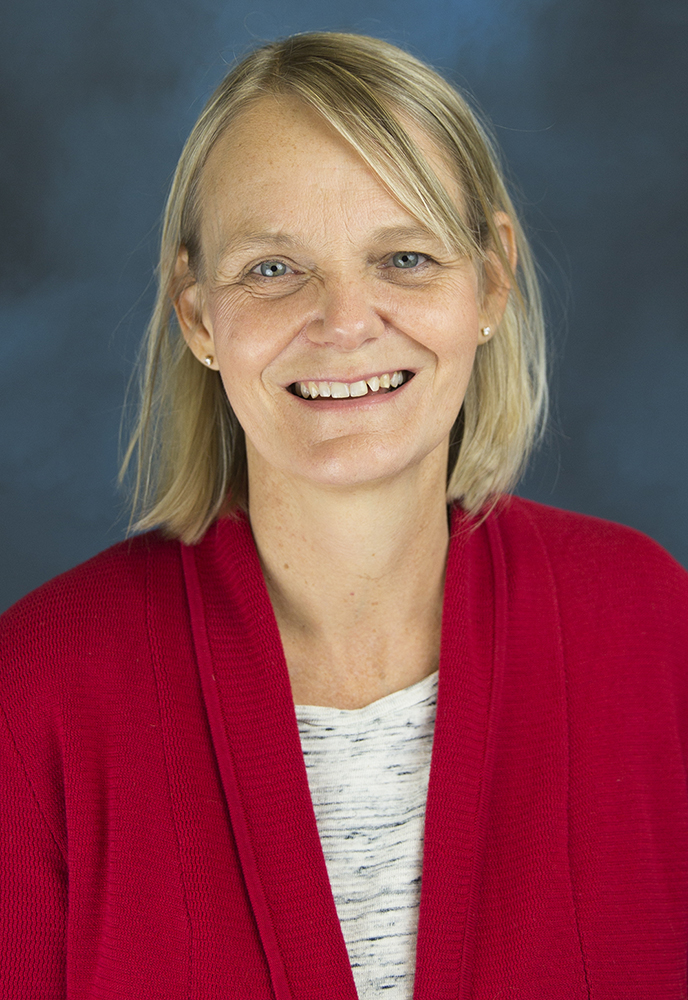
Syda-Productions/Shutterstock
.
Students who have experienced foster care or homelessness are often doing it all: managing complicated and ever-changing family situations, carrying out adult-level responsibilities such as parenting siblings, paying their own bills and keeping up with housework — all while pursuing a degree. For these students, the hurdles experienced in high school and college are amplified by their life circumstances. Ultimately, the family experiences that serve as a precursor to foster care or homelessness may result in transience in family support, housing and education.
Several years ago we were awarded a grant from the Spencer Foundation to study the life pathways and early college experiences of young adults who had experienced homelessness and/or foster care during high school. We spent a year documenting the education, housing and life experiences of 33 students at 12 colleges across the state of Georgia. We knew that students who have experienced homelessness and/or foster care face significant barriers getting to and staying in college and we wanted to understand what that looked like in the everyday lives of these students so that we could learn from them and work on potential solutions.
While homelessness and foster care are different experiences, we focused on these two often overlapping groups because they share similar challenges that affect the transition to college. We interviewed young adults who were attending college or trying to attend college three times over the course of an academic year. What follows are a few takeaway messages from our study.
Family transience interferes with support
“It was kind of a shelter, but it was not a shelter because it was a house, and the lady had a lot of us there … I think I was 11, I sort of bounced around then. It wasn’t a foster care, but it was more like people with houses who let kids stay there.”
While the family experiences of the students in our study varied, the majority had experienced complex and changing family arrangements. For some, family arrangements changed through multiple foster care placements and changes from one group home to the next. For others, significant life events such as parental homelessness or death of a parent led to living with an array of people outside the family of origin and, sometimes, complete strangers.

David Meyers
Regardless of the triggering event, the students in the study lived in family accommodations that changed frequently. The impact of this family transience was that these students were forced to become independent and self-reliant, taking care of themselves and often others at an early age as well as fractured family support networks.
The group of students in our study had largely overcome the odds; the majority were enrolled in college and several graduated as the study was ending. Counteracting the weakened supports that resulted from a changing family support system were adults who recognized their academic potential and helped them navigate the transition to college.
Students move a lot before and during college
“I stayed in a hotel for a week. And that’s before I graduated. I can’t tell you when. It was just before I graduated. And it was just because I didn’t have anywhere necessarily to go. That was maybe between [living with] the first friend and the second friend.”
Housing instability during childhood and throughout college is closely related to the lack of constant family support. During childhood, housing stability is tied to family, usually parental, support. When family members are absent or are unable to provide stable housing, it is difficult to maintain housing arrangements over the long term. Some of these changes are directly tied to the complex and changing family arrangements experienced by the students in our study. Changing from one foster family to another results in a change of address. Parents doubling up with another family after losing a home prompts a change of address. The struggle to maintain stable housing continues in college. During emerging adulthood, which begins in the late teens and extends to the late 20s, young adults from families with financial means often receive a substantial amount of material support from their families.
Given the support needed in young adulthood, it comes as no surprise that housing instability continued into college for the students in our study. Off-campus housing is expensive and can make it more difficult to get to campus. Living on campus provides housing stability, yet the closure of dorms during breaks and over the summer leaves students with nowhere to go. Without significant financial support and programs that allow for year-round living accommodations in college, young adults who have experienced homelessness of foster care struggle continue to face housing instability and episodes of homelessness in college.
Circumstances make it hard to focus on school
“It was kind of hard to focus with everything going on in the background. So I think that’s why I left because academically I wasn’t focused. I just wasn’t there to be able to focus. It’s the first year of college. That’s like the foundation of your career.”
While high school had often provided stability, consistency and adult mentors in the midst of the chaos and change for the students in the study, navigating life on a college campus was more complex. Students’ resilience and self-sufficiency skills in high school may have helped them get to college, but these same attributes may be a hindrance to success if students are reluctant to seek out help through academic support networks.

Kimberly Skobba
Navigating the financial aid process, registration, campus involvement and the differing expectations and support levels of course instructors is challenging for most students. For students who lack a material support network, the difficulty of managing these multiple processes was often overwhelming and the consequences severe. Late financial aid payments meant students were dropped from their classes. Seemingly small costs for a math calculator or a textbook resulted in avoiding or dropping a required course. One student described how a $200 bill on a student account could be devastating.
The inability to pay tuition frequently meant a disruption in school attendance. The inability to pay for housing created similar challenges; several students had experienced eviction while in school while others described living in their cars for periods of time. At the same time, students were dealing with trauma from their past, concerns about or conflict with family members, which led to feelings of isolation on campus. Maintaining academic work and creating the on-campus network that most students need for success is difficult to do when students are managing everything on their own.
How colleges can support foster students
The needs are great and while nothing can undo the challenges of the past, some simple shifts in focus may help make the paths toward graduation a bit more straightforward for this resilient, yet tenuously enrolled, group of students. Based on our experiences and what we heard from the students who we interviewed for this project, challenges come in two primary areas: financial and social/emotional.
Developing supports to address these two areas is crucial. However, opportunities can be found in promising practices that have emerged across the country and range from short term and reactive to long range and proactive. Many campuses in Georgia and across the country have implemented strategies of support. Some examples include:
- Building intentional opportunities for the development of positive relationships with adults on campus; in other words, building a bridge to the institution through campus coaches or mentors. This strategy, often referred to as campus-based programming, requires a campus to invest resources in people who can assist those students who have experienced foster care and/or homelessness. They need help navigating the tangible challenges of enrolling and completing a degree, such as connecting with campus personnel to ensure that they meet registration deadlines, handling financial aid requirements and connecting with campus resources such as academic supports. These same campus personnel are able to help young people strategize when dealing with difficult situations with professors, peers or others — the kind of situations that prompt students to call home and discuss with their parents or someone else in their social web of support. Guardian Scholars at California State University, Fullerton is generally recognized as the first such campus-based program designed to support students who have experienced foster care. The model has been replicated at more than 30 campuses in California and in other states, where programs like Seita Scholars at Western Michigan University and the University of Washington Champions deserve mention.
- Addressing “structural” issues, like access to year-round housing and institutional support, is important. Equally as important is ensuring that those students who need it most have access. It only makes sense that students like the ones we spoke with are often dealing with day-to-day issues. Tasks like completing the FAFSA early in the year, maybe even in October when it first becomes available, might be overlooked until a representative from the Student Financial Aid Office suggests that it has to be complete in order to qualify for student aid. As a result, opportunities for support in the form of scholarships and year-round housing often are awarded to those students who complete the paperwork early; in other words, students who do not have to worry about where they are going to lay their head at night. Addressing structural issues presents a bit more of a challenge and requires partnerships and collaboration on campuses to address their own specific processes that may be experienced as barriers to students.
- Ensuring the small expenses don’t lead to major interruptions in school. Building emergency funds and ensuring access is crucial. For those students who have very limited resources, a small expense can become catastrophic. A parking ticket, a flag on a student account, an unpaid fine or even a car repair can lead to insurmountable situations. This is not to suggest that campuses should be in the business of paying for all unexpected expenses for any group of students, but they should consider making funds available for those who are not able to pay these seemingly minor expenses, which can lead to the student not being able to make it to campus or register for classes. Many campuses have developed emergency funds that are available through an application process or through a relationship with a campus coach or case manager. These funds are invaluable in providing flexible and timely support to address issues that might otherwise derail a student’s educational path.
In Georgia, we have created the Embark Network, a network of supportive people and programs on campuses across the state. The mission of Embark is increase college access and retention for youth who have experienced foster care or homelessness. This network, a public/private partnership, seeks to build relationships among those who have interactions with students and to share information about promising and best practices.
One of the early wins for Embark was the establishment of a Designated Point of Contact (DPOC) on every public campus in Georgia; the role of the DPOC is to assist prospective and current students by connecting to campus and community resources. Students who find the DPOC on their campus know that their campus has appointed a person to support them — not only a concrete gesture but also a symbolic one that represents that campuses are paying attention to support students of all sorts. The network will host its third conference Oct. 3-4 at Columbus State University.
These supports, and others we have run out of space to describe, will play a role in ensuring that the students like those we interviewed will have a strong hand up in staying in school, which is better for everyone in our communities, whether they are directly affected by this issue or not.
David Meyers works on a variety of youth and family leadership initiatives with a primary focus of supporting youth in foster care and the families and institutions that serve them. He came to the University of Georgia to join the public service faculty at the JW Fanning Institute for Leadership Development in January 2010; he is also a part-time faculty member in the UGA School of Social Work.
Kim Skobba is an associate professor in the housing management and policy program and the director of the Housing and Demographic Research Center at the University of Georgia. She teaches courses that focus on housing and community development and studies rural housing conditions and housing instability among low-income households.





























